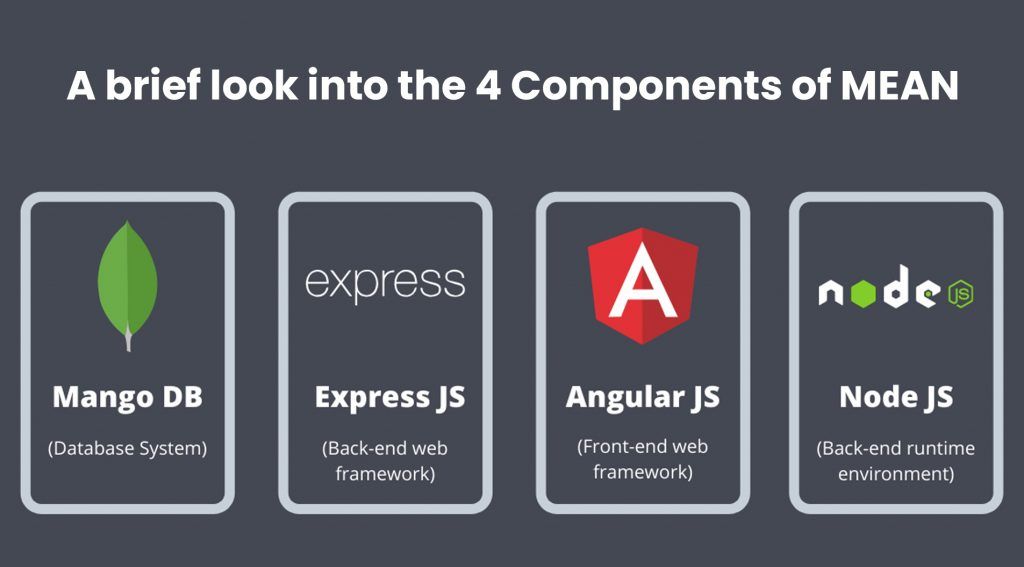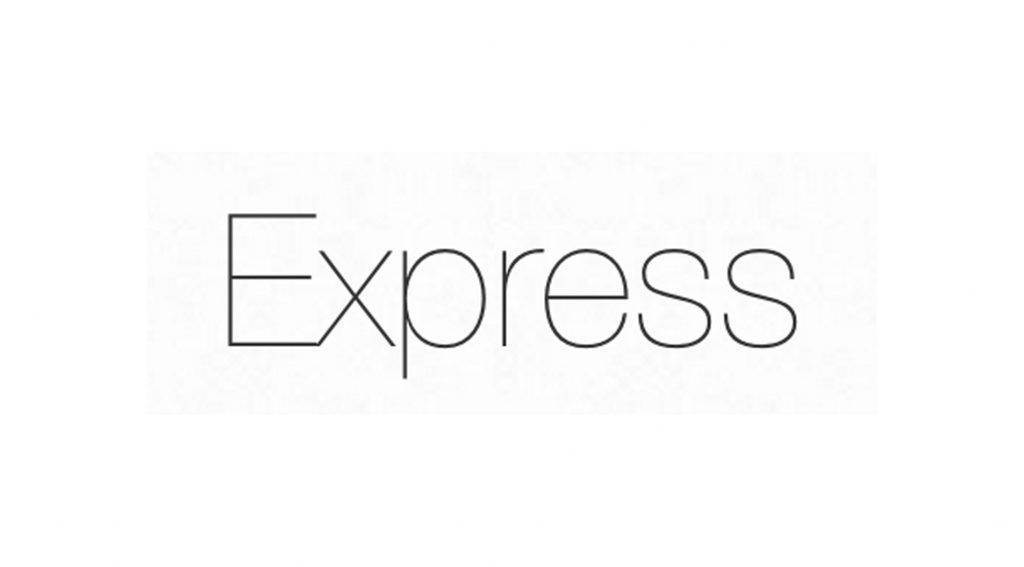MEAN Stack Development Influences The Future Of Web Apps

In a world where technology is advancing at a rapid pace, the number of ways in which we can interact with one another and with our environment is seemingly limitless.
The development of web applications has become a major trend in recent years, and people are looking for MEAN Stack development influences to make their app experience more fluid.

The implementation and usage of Web app development are increasing and are currently in a fast-moving realm. A highly competent architecture and navigation are in demand in today’s web applications.
They need to be dynamic, user-friendly, robust, and flexible. The developments and evolutions in technology leave web developers with many choices for their apps. One essential factor while choosing a suitable framework for the solution, it is essential to determine a software technology that combines the best features to work.
MEAN stack is a growing contemporary trend for JavaScript development. This stack is the one technology that meets all the requirements for fully efficient development in the best possible way. An open-source JavaScript bundle for web apps, MEAN is an acronym that stands for:
- M stands for MongoDB,
- E stands for Express,
- A for AngularJS and
- N for NodeJS.
Web developers find MEAN stack application development an attractive choice and are switching to it as it is on the latest technology-go-to basis, the full-stack JavaScript. The flawless combination of these 4 robust technologies makes it the most sought bundle for web app development services.
What makes this stack an ideal choice for developing a website is as follows:
- Flexible in developing for any size and type of organization.
- Best viable technology solutions for all Business segments from startups, SMEs, or large enterprises.
- Straightforward for frontend and backend developers to apply this framework.
- A suitable framework for any multi-layer application.
- Immense benefit in terms of productivity and performance.
Knowledge of JavaScript language mechanisms from the presentation layer to the database is all you need to proceed with the MEAN stack software.
MEAN stack development is a combination of the latest technologies in Web apps. The Mean Stack is a set of Javascript frameworks that are used in the development of web applications. The architecture and navigation provide you with more usability on your web apps.
The article will show you how the MEAN stack helps you develop web applications efficiently and rapidly. You will also get to know its pros and cons.
Components of MEAN

1. MongoDB
MongoDB is the open-source, NoSQL database framework for JavaScript

- Cross-platform document-oriented database model
- A schema-less, independent NoSQL database
- Along with JavaScript, it limits to a single language for the complete application development
- Collects and stores the application’s database in MEAN
- High scalability in both storage and performance
- Cost-effective and useful in transferring both client and server-side data without compromising data access
- Expandable resources, load balancing, and handling increased activity durations
2. ExpressJS
ExpressJS is the lightweight server-side JavaScript framework

- Web application framework for NodeJS and simplifies the development process
- Cuts down the entire process of writing secure code for web and mobile applications
- Developers can include New features and enhancements
- The minimal structure is mainly used for backend development and aids in decluttering
- Building smooth server-side software with NodeJS
- Prevents accidental redefinition of a variable, therefore, eliminating errors and time-saving
3. AngularJS
AngularJS is the web frontend JavaScript framework

- A browser-free MVC JavaScript UI framework with data binding
- Popular Google’s front-end framework enables a smooth flow of information throughout the application
- Enables rapid development of dynamic single-page web apps (SPA)
- Modular structure and development for both mobile and web
- Easy-to-use templates and high scalability for full-stack front-end augmentation
4. NodeJS
NodeJS is the open-source JavaScript-based runtime framework

- Built on Chrome’s JSV8 engine
- Before execution, compiling JavaScript source code to native machine code is done
- Helps build scalable, secure web applications and comes with an integrated web server
- Maintains a vast ecosystem of open-source libraries and components
- Quickly responds to usage spikes during runtime
What are Some Reasons for the Preference for this stack Development Software?
The reasons behind why the preference for this Stack Development software for Web Applications is as follows:

- Inexpensive in Nature
Due to its budget-friendly nature, development finds its main reason to be a cut above other technology frameworks in existence. Also, as it is a full-stack development, unnecessary expenditure over resources can be eliminated for the customers as well as the developers. Hence, a large volume of reusability and sharing of code amongst the developers occurs. This process, thereby, restrains the budget considerably.
- Full JavaScript Framework
Since the framework is entirely JavaScript, it has its set of benefits to provide in terms of exceptional user experience and data handling. Both Linux, as well as Windows OS, are supported. Data recovery is speedy due to the power and dependability of the framework. Seeing that both NodeJS and AngularJS contribute to a better condition to build competent web apps and more traffic occurrences.
- Universal Accessibility to JSON
It adds to the advantage of having a seamless expanse of data within layers because JSON is present all over, whether it’s AngularJS, MongoDB, NodeJS, or ExpressJS. The highlight is that rewriting the code is not necessarily required. Data flow between the layers is much more comfortable and does not necessary to be reformatted. MEAN utilizes a standard JSON format without exception for data. Also, it becomes increasingly simpler while functioning with APIs.
- Highly Scalable and so very Popular
Full-stack development with MEAN is scalable, and its ability to handle multiple users makes it a reliable choice and a business favorite. In addition to that, all four components are open source. The development time is also faster, owing to the presence of various frameworks, libraries, and reusable modules. Because of its swiftness in operation, ease of collaboration, ease to learn, and taking less time to develop cloud-native applications, it’s eventually a developer’s choice.
- Easy Accessibility of JavaScript Resources
Being open-source makes it available for free. MEAN can be easily deployed as it includes its web server. The development potential is on the higher side for many other JavaScript resources with this stacking technology. Because of this, MEAN stack web development has made avid developers look ahead to work, and the built-in elements of JavaScript make it even more, easier to utilize resources in this sector.
- Reusability and Fixing are much simpler
Streamlining the development process by using a single language across the whole application is possible. Thus it becomes easy for developers as it eliminates the need for different specialists for developing each part of any web application. It also enables easy tracking of the entire development flow, monitoring data exchange, and catching sight of errors/bugs. This technology can be even more improvised with the help of a few third-party open-source tools and libraries that allow the front end and the back end to reprocessing quickly.
- Lowered Development Expenses
A MEAN application penetrates the tech world improvised to take advantage of all the cost savings and performance improvements of the cloud. The primary feature of this innovative technology is that it does not incur any needless expenses, thereby a large volume of concurrent users can be reached. Code reuse across the entire application reduces reinvention, and code sharing helps developers to reach their target objective within the committed time frame and allocated budget.
- Enables Collaboration Between Developers
The stacking technology has a lot of community support behind it, and finding answers to questions or even hiring assistance can be obtained. All developers speak the same programming fundamentals, so it’s effortless and efficient for them to understand the nuances of web app development mutually. The advantage of hiring MEAN stack developers is more since they can effectively understand, facilitate association, and manage the project with ease.
- Access to Congruent Coding
MEAN stack helps to transfer within frames, i.e., the server side and the client side. Creating code in one framework and transferring it to another is achievable without any difficulty or disruption in performance. It is yet another critical feature of this technology in comparison to the rest.
- Systematic & Exceptionally Flexible
It is incredibly swift to prototype because the stack has its internal web server that enables opening without difficulty, and the database can be systemized on-demand to contain momentary usage spikes. Consistent language and flexibility give it an added competitive edge for developers.
Some of the famous and familiar websites that use the MEAN stack are Netflix, Uber, LinkedIn, Walmart, PayPal, and Yahoo. Web development frameworks and databases are enhancing every day. This is the most suitable stack technology for cutting-edge web and mobile application development.
In A Nutshell.
The MEAN Stack Development is a new and popular method of web app development. The MEAN stack encompasses MongoDB, ExpressJS, AngularJS, and Node.js programming languages, and all work together to create interactive web apps with an easy navigation system.
The MEAN stack is a developer-friendly highly-leveraged open-source collection of JavaScript-based tools for developing modern web and mobile applications. The MEAN stack is advantageous because it promotes scalable and maintainable projects by simplifying development and design for the developer.
Web applications are used in all sorts of industries, often to make transactions. They are also used to store data for future needs. The industry is also experiencing an increased need for web app development experts. Experts are needed because innovation in the field has come to a point where coding knowledge is needed.
MEAN stack web application development is a significant aspect of the changing web landscape. It is imperative for any IT professional or developer to be up-to-date on the latest trends in this area if they want to be competitive in today’s job market.
FAQ
Q1. Why Mean Stack Development is advantageous?
Ans- The MEAN stack is advantageous because it promotes scalable and maintainable projects by simplifying development and design for the developer.
Q2. What is the purpose of the Mean Stack?
Ans- The Mean Stack is a set of Javascript frameworks that are used in the development of web applications. The architecture and navigation provide you with more usability on your web apps.
Q3. Write the components of Mean Stack Development.
Ans- M stands for MongoDB,
E stands for Express,
A for AngularJS and
N for NodeJS.
